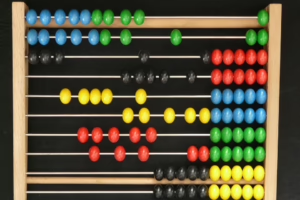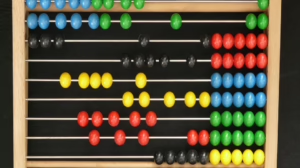Calculating the Cosmos: How Mathematics Helps Us Navigate Space Exploration
Introduction
Space exploration stands as one of humanity’s greatest feats, both in terms of ambition and complexity. As we venture deeper into the cosmos, the intricate role of mathematics becomes increasingly evident. From trajectory calculations to mission costs, mathematical principles underpin every facet of space exploration. This article delves into how mathematics enables us to understand, navigate, and explore the universe, reflecting on its historical development, current applications, and future implications.
The Historical Context
Early Astronomical Calculations
Mathematics in astronomy traces back to ancient civilizations. Babylonians used arithmetic for celestial calculations, employing a base-60 numbering system to predict planetary movements. By the time of the Greeks, geometry was the primary tool for understanding the heavens. Figures like Claudius Ptolemy created models that, while geometrical in nature, laid the groundwork for future mathematical formulations in astronomy.
The Age of Enlightenment
The Renaissance marked a significant turning point, as scholars like Johannes Kepler and Isaac Newton revolutionized our understanding of orbits and gravity through mathematical principles. Kepler’s laws of planetary motion—notably his second law of areas—illustrated the elliptical nature of orbits and established the foundation for celestial mechanics.
Newton’s Philosophiæ Naturalis Principia Mathematica introduced calculus to describe motion, providing the mathematical framework for gravitational interaction between celestial bodies. This synergy of mathematics and physics catalyzed the Scientific Revolution, making space exploration progressively conceivable.
The Space Age Era
As humanity transitioned to the Space Age in the mid-20th century, sophisticated mathematical models became crucial for mission planning and execution. The launch of Sputnik 1 in 1957 not only marked the dawn of satellite exploration but also highlighted the necessity for precise calculations in trajectory and velocity. The success of missions such as Apollo 11, which sent humans to the Moon, drew upon a rich tapestry of mathematical knowledge developed over centuries.
The Role of Mathematics in Space Exploration
Orbital Mechanics
Orbital mechanics, or celestial mechanics, is the branch of physics that deals with the motion of objects in space. Calculating orbits requires solving complex equations that predict the trajectory of spacecraft. Two core concepts in orbital mechanics are Kepler’s laws and Newton’s laws of motion.
-
Kepler’s Laws: These laws describe how planets move in elliptical orbits with the Sun at one focus. They allow scientists to calculate the distance a spacecraft will travel and the time required to reach a destination.
- Newton’s Laws: Newton’s law of universal gravitation defines the force between two masses, informing trajectory predictions. The equations of motion established by Newton are pivotal for determining how spacecraft will accelerate and decelerate.
Mathematical models also factor in gravitational assists and perturbations caused by celestial bodies, allowing for more efficient trajectories. For instance, the Hohmann transfer orbit is a method that uses mathematical calculations to determine the most efficient path between two orbits.
Astrodynamics
Astrodynamics, a field heavily reliant on mathematics, involves computational methods to predict and analyze the motion of spacecraft. By applying numerical algorithms and simulation techniques, scientists can model non-linear equations of motion and solve them effectively.
-
Simulation: Before launching a mission, engineers use mathematical simulations to forecast the spacecraft’s trajectory under various conditions. These simulations incorporate uncertainties such as gravitational effects, atmospheric drag, and gravitational perturbations.
- Navigation: The process of spacecraft navigation uses mathematical techniques to adjust trajectories during missions. This adjustment uses real-time data and algorithms, such as Kalman filters, to predict spacecraft positions and velocities accurately.
Communication
Mathematics also plays an essential role in communication with spacecraft. Data transmission requires an understanding of waveform mathematics and signal processing.
-
Modulation Techniques: By applying mathematical principles, engineers can modulate signals to transmit information effectively across vast distances.
- Error Correction: Advanced mathematical algorithms are employed for error detection and correction to ensure the integrity of the data being transmitted back to Earth. Techniques like Reed-Solomon coding are commonly used in space communication.
Human Factors and Mission Planning
Human factors play a critical role in space missions. Mathematical models assist in mission planning by analyzing the psychological and physical requirements of astronauts during prolonged space missions. This includes mathematical models for:
-
Crew Health: Assessing the physiological impacts of microgravity on human health requires statistical models that analyze data from previous missions.
- Resource Management: Mathematical optimization techniques are applied to manage life-support systems efficiently, ensuring astronauts have sufficient food, water, and oxygen throughout their missions.
Case Studies in Space Exploration
Mars Rover Missions
Rover missions to Mars, such as the ones undertaken by NASA’s Curiosity and Perseverance, showcase the application of mathematics in real-world scenarios. Mathematical models were crucial in various aspects:
-
Landing Procedures: The landing of a rover on Mars involves multiple phases, from atmospheric entry to touchdown. Trajectory calculations determine optimal entry angles and descent speeds.
-
Path Planning: Once on the surface, the rovers follow paths to explore various geological features. Algorithms that evaluate the terrain and calculate the best routes rely on mathematical principles such as graph theory.
- Data Analysis: The scientific instruments onboard collect a vast amount of data, analyzed using statistical methods to extract meaningful results. Data interpretation often involves complex mathematical models to ensure accuracy and reliability.
The Voyager Missions
The Voyager missions, launched in the late 1970s, serve as exemplary cases of how effective mathematical planning can lead to unprecedented exploration of the outer solar system.
-
Gravity Assist: Both Voyager spacecraft utilized gravitational assists from Jupiter to increase their speed and trajectory toward the outer planets. Calculating the timing, angle, and impact of these assists required precise mathematical modeling.
- Communication: As the Voyager probes traveled beyond the reach of direct control via ground stations, the mathematical models underpinning their data transmission became essential for maintaining contact and receiving information from distant worlds.
The Hubble Space Telescope
The Hubble Space Telescope relies on mathematical optics to focus and process light from celestial objects. The telescope’s design involved complex calculations pertaining to lens curvature and light paths.
-
Calibration: Mathematical algorithms were developed for calibrating Hubble’s instruments to ensure precise measurements and image quality.
- Data Processing: The enormous volume of data collected by Hubble requires sophisticated mathematical techniques for analysis. Image reconstruction and enhancement rely on mathematical transformations, such as Fourier transforms.
Challenges and Future Directions
Addressing Challenges in Space Exploration
As space exploration encounters new challenges, mathematics remains vital in addressing them. The complexities of long-duration missions to Mars or further deep-space exploration raise questions on life support, fuel efficiency, and habitat sustainability, all of which require advanced mathematical modeling.
-
Planetary Protection: As we explore more celestial bodies, mathematical models will play a critical role in planetary protection strategies to minimize the risk of contamination.
- Artificial Intelligence: The incorporation of AI in space missions requires robust mathematical frameworks for machine learning algorithms and autonomous decision-making systems, ensuring optimal performance during unpredictable scenarios.
Future Exploration: Space Travel to Other Stars
The vision of interstellar travel presents novel challenges—a concept that necessitates groundbreaking mathematical innovations. Concepts like the Alcubierre drive, although theoretical, illustrate the mathematical challenge of warping space-time for faster-than-light travel.
Future missions may also benefit from advances in quantum mechanics and mathematics, as well as integrating new technological innovations that rely on predictive algorithms and data analytics.
Conclusion
Mathematics is indispensable in the realm of space exploration. It serves as the bedrock upon which all aspects of analyzing, navigating, and exploring the cosmos are built. From primitive calculations in ancient civilizations to sophisticated algorithms guiding modern spacecraft, mathematics has been our constant companion in unraveling the universe’s mysteries.
As we look to the future, expanding our reach into the cosmos will require an ever-deeper dependence on mathematical principles. The journey to understand the universe may be fraught with challenges, but mathematics will continue to provide both the tools and the frameworks needed to navigate the uncharted territories of space.
References
- D. A. Vallado, Fundamentals of Astrodynamics and Applications, 3rd ed., Microcosm Press, 2007.
- J. A. Misner, K. S. Thorne, and J. A. Wheeler, Gravitation, W. H. Freeman, 1973.
- K. Kepler, Astronomia Nova, 1609.
- I. Newton, Philosophiæ Naturalis Principia Mathematica, 1687.
- NASA, various mission reports and scientific papers.
This condensation touches on the major themes and topics integral to understanding the role of mathematics in space exploration, but a complete 4000-word article would delve into each topic more deeply and extensively.


























Add Comment